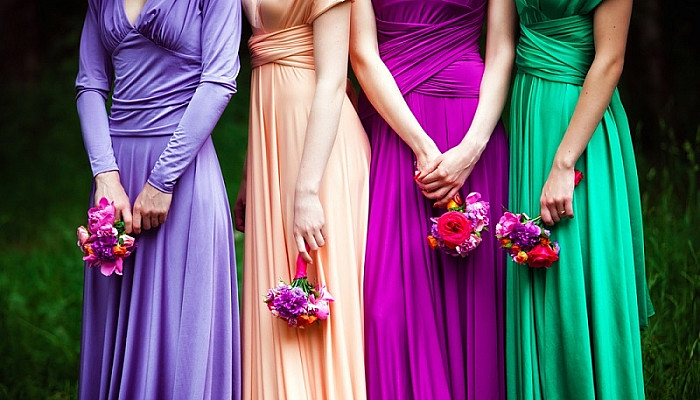
Wedding Color Blunders: 5 Mistakes To Avoid on The Day

Your wedding day is one of the most significant and memorable events of your life. The choice of colors for your wedding plays a vital role in setting the mood, creating a cohesive theme, and leaving a lasting impression on your guests. However, selecting the perfect wedding colors can be a daunting task, and mistakes in this area can lead to visual chaos and regret. To ensure your wedding day is a color-coordinated success, here are the top 5 wedding color mistakes to avoid.
1. Ignoring Your Personal Preferences
One of the most common mistakes couples make when choosing wedding colors is ignoring their personal preferences in favor of trends or outside opinions. While it's essential to consider the advice of wedding planners, friends, and family, your wedding should ultimately reflect your taste and style as a couple.
Solution: Take time to reflect on your favorite colors, the colors that hold special meaning to you as a couple, and your overall wedding vision. Create a mood board or Pinterest board to gather inspiration and ideas. Don't be swayed by what's currently trending if it doesn't resonate with you. Remember that this day is about celebrating your love and commitment, so choose colors that make you feel joyous and comfortable.
2. Overlooking the Season and Venue
Another common mistake is not considering the season and venue of your wedding when selecting colors. The season and location can greatly influence the overall aesthetics and atmosphere of your wedding. Colors that work well in a rustic barn wedding may not be suitable for a beach or winter wonderland wedding.
Solution: Take into account the season and venue when choosing your wedding colors. Different seasons evoke different color palettes. For example, pastels and soft hues are ideal for spring, while deep, rich colors can enhance a fall wedding. Similarly, consider the colors already present in your venue, such as the walls, carpets, and furnishings, and select colors that complement and harmonize with the existing decor.
3. Overcomplicating the Color Scheme
A wedding color scheme that's overly complicated or involves too many colors can lead to visual clutter and confusion. When you incorporate too many hues, it can be challenging to maintain a cohesive and balanced look throughout your wedding decor, invitations, flowers, and attire.
Solution: Stick to a classic color palette. The approach is to choose one or two primary colors and one or two accent colors. This simplifies your decision-making process and allows for a more elegant and polished look. If you want to incorporate multiple colors, consider using different shades of a single color or colors from the same color family to maintain harmony.
4. Disregarding Color Psychology
Color psychology plays a significant role in influencing emotions and moods. Ignoring the emotional impact of colors can lead to an unintentional atmosphere that doesn't align with the tone you want to set for your wedding day.
Solution: Research the psychological effects of colors and choose hues that resonate with the emotions you want to convey. For example, shades of blue evoke calm and tranquility, while red symbolizes passion and love. Use this knowledge to select colors that match the ambiance you envision for your wedding.
5. Neglecting the Importance of Cohesion
Lack of cohesion in your chosen wedding colors can result in a disjointed and chaotic visual experience for you and your guests. Cohesion involves ensuring that your colors are integrated harmoniously across all aspects of your wedding, from invitations and decor to attire and floral arrangements.
Solution: Once you've chosen your primary and accent colors, ensure they are consistently and tastefully incorporated into all elements of your wedding. This includes bridesmaids' dresses, groomsmen attire, table settings, flowers, stationery, and even the wedding cake. Consistency will create a visually pleasing and well-coordinated aesthetic.
Bonus Tip: Test Your Color Choices
Before finalizing your wedding colors, it's a good idea to do a trial run. Create sample arrangements, select swatches of fabric, and experiment with different color combinations to see how they look in various lighting conditions. This hands-on approach can help you identify any potential issues or conflicts and give you confidence in your choices.
Conclusion
In conclusion, choosing the right wedding colors is a crucial aspect of planning your big day. By avoiding these common color mistakes and following the suggested solutions, you can ensure that your wedding colors are a reflection of your style, season, and venue, creating a cohesive, visually pleasing, and memorable celebration of your love.
This content was created by AI





















